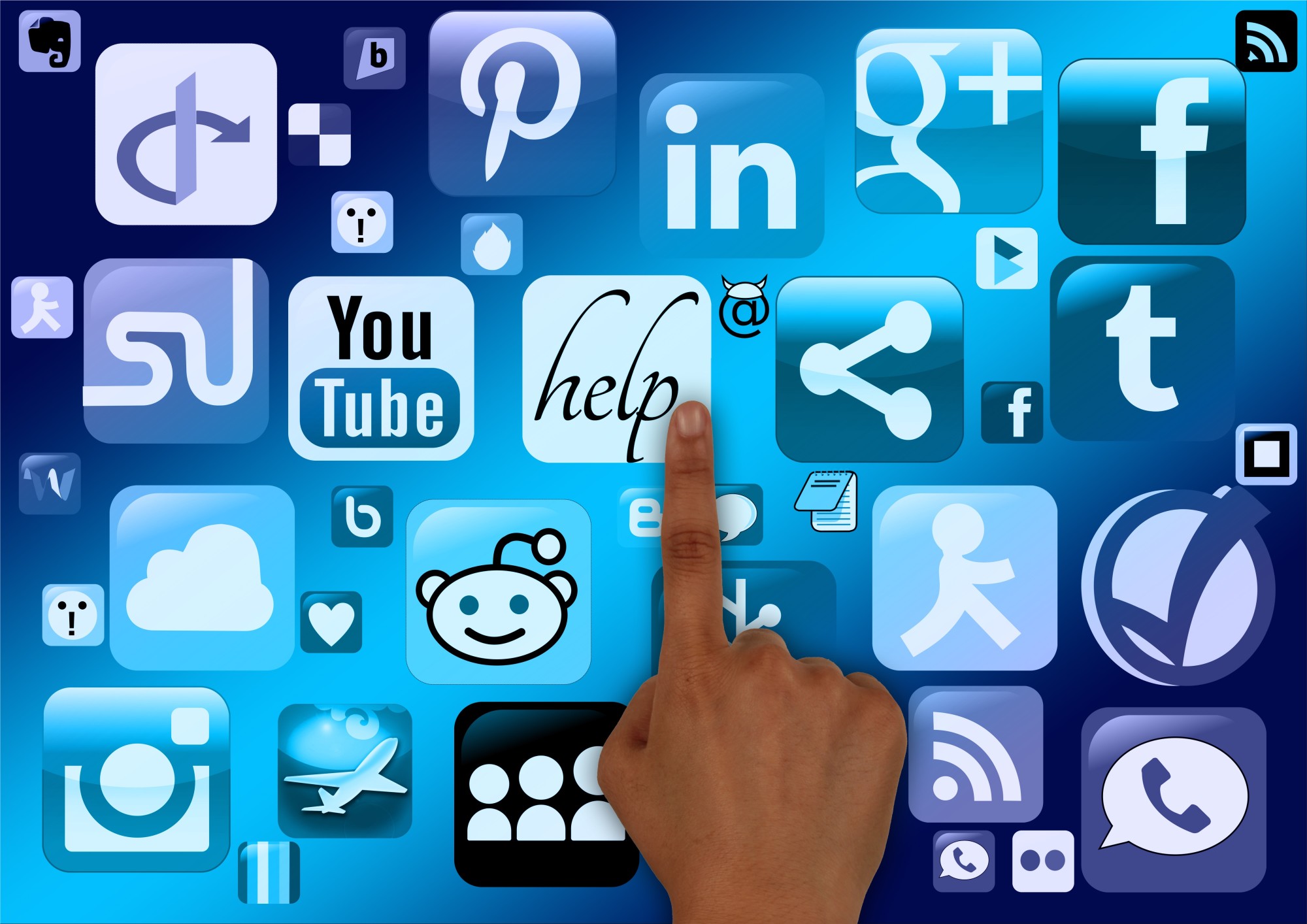Organic Logo Requirements: What You Need to Know Before Creating Your Own Logo
Posted on February 19, 2020 by Logo Design Tips and Tricks

Over the last few years, the natural and organic product industry has seen major growth. It even recently hit a sales record of $219 billion.
Are you part of this booming industry? Are you having a hard time getting your products to stand out from your competitors’?
If this is the case, your logo might be part of the problem. Read on for some tips that will help you create a great organic logo for your natural products.
Why Do Logos Matter?
There are plenty of reasons why your logo can have a big impact on the success of your company. The following are some of the key benefits that come with having a great logo design:
Get People’s Attention
It doesn’t matter if you’re selling your products in big box stores or at tiny neighborhood farmer’s markets. Anywhere you sell your product, you’re going to need to get people’s attention with your logo if you want them to consider buying it.
The right logo can make it much easier to attract people to your products. It also helps you to separate yourself from the other businesses in your industry.
Make a Great First Impression
In addition to helping you get people’s attention, the right logo design helps you make the right kind of first impression on potential customers. You want people to look at your products and have a positive view of your company right away, don’t you?
Build Your Brand Identity
Your logo design is a key component of your brand identity. People will look at your logo and make all kinds of judgments about your company. If you want their assessment to be positive, make sure your logo delivers the right kind of message about your brand and what you have to offer.
Build Brand Loyalty
The more people start to see and recognize your logo, it’ll be easier for them to develop a sense of loyalty to your brand. They’ll be able to pick you out of a crowd and will gravitate toward your products because they’re familiar and they have positive associations with them.
Natural and Organic Logo Design Tips
Okay, you’re convinced that you need to take logo design seriously. Where do you even begin, though? How do you separate your natural and organic product’s logo from all the other logos on the market?
Here are some helpful tips to get you started:
Choose the Right Colors
When you’re creating a natural and organic product logo, start by making sure you’re using the right colors. Remember, consumers will create associations with different colors, often on an unconscious level.
For natural and organic products, green is almost always a safe bet. People associate the color green with nature, which ought to work perfectly for your brand.
You can utilize other colors besides green, though. Browns, blues, and even reds can all be associated with the earth and have a positive effect on consumers looking to purchase natural and organic products.
Use a Sans Serif Font
Font plays an important role in your logo design as well. For natural and organic products, sans serif fonts tend to be a better fit than serif fonts.
Many people associate serif fonts with elegant, corporate brands. That’s probably not the vibe you’re trying to create if you’re selling natural products that come from the earth.
Find a Good Brand Icon
Using the right brand icon can help to differentiate your logo from other natural product logos on the market. A brand icon can tell shoppers what makes your products special and helps to eliminate confusion with regard to what you’re selling.
Choosing an icon like an apple, for example, can make it clear that you sell delicious organic apples. This might seem a little too bold or straightforward to you. Sometimes, though, when it comes to marketing, it pays to be direct.
Keep It Simple
Speaking of being direct, keep your logo design simple, too. The more complicated your logo is, the harder it will be to recreate.
If you plan to use your logo on various products, as well as things like attire for your employees, you’ll want to come up with a design that can be recreated in various sizes and textures without losing its impact. Keep in mind, too, that when you have a simple logo design, it’s also easier for people to remember it and start to recognize it.
Consider Your Competition
Pay attention to the type of logo designs your competitors are coming up with. Do some research and think about the colors, fonts, and icons that they’re using.
Once you know what your competitors are doing, do your best to create a logo that looks totally different. This will make it easier for people to separate you from other brands in the industry that sell similar products.
Know the Laws
When it comes to developing the logo and brand design for natural and organic products, make sure you have a clear understanding of the laws. There are certain laws in place that you must abide by if you want to use particular phrases or symbols on your packaging.
For example, if you want to use the USDA certified organic logo on your products, you’ll need to make sure you abide by the USDA’s rules. This includes having your facilities inspected by someone from the organization.
It’s an expensive and time-consuming process. It can be worth it, though, if it lends credibility to your brand and helps people develop trust in your products.
Start Creating Your Natural and Organic Logo Today
As you can see, the design of your natural and organic logo plays a key role in helping you promote and grow your business. If you’re unsure where to begin when it comes to designing or redesigning your logo, be sure to follow the tips outlined above. They’ll help you create a great design that catches people’s eyes and gets them interested in what you’re selling.
Do you want to learn more about logo design or other essential marketing tools? If so, visit the Marketing and Promotion section of our blog today. You’ll find lots of other helpful resources there.
Graphic Design for Beginners: 5 Essential Tips
Posted on February 18, 2020 by Logo Design Tips and Tricks

Well designed visual content is 40 times more likely to get shared. So if you want your business-related content to get shared, it needs to look beautiful and appeal to your audience.
There are specific rules you need to follow so that your designs come out looking professional and visually appealing. As a beginner in graphic design, you should start by learning these rules and sticking to the basics.
Follow these tips on graphic design for beginners to ensure you create beautiful artwork for your business.
1. Stick With Contrasting Colors
You want to choose colors that command attention and evoke emotion. You should choose colors that represent your brand identity while also inspiring your desired emotion in the audience.
High contrast colors are on opposite sides of the color wheel from each other. They provide the most significant contrast to make your design pop. Change background colors of graphics to be one color, then the font and other graphics should be a different matching color.
Look up the hex codes for your chosen colors to ensure consistency across all of your designs.
2. Keep the Fonts Simple
Your audience needs to be able to read the text, or your message is lost. Don’t use more than two fonts in a single design. Try to keep the two fonts within the same family.
A common way of using two fonts is to use one for the headers and one for the body text. Keep the text large enough to read.
3. Embrace the White Space
Don’t fill every open space. Having empty areas or “white space” in your design can help draw the focus to the main point. Your design will look professional, and there will be fewer elements for you to worry about.
4. Align Your Design
Designs that have several elements that are not in alignment are difficult to look at and decipher. They look sloppy and unprofessional to your audience. Use software that has guides to help you align all of your design elements.
Adobe programs all have guides and alignment assistance to help you. Think about aligning all of your lines of text. Make sure all lines of text are evenly spaced.
5. Icons Are Your Friends
Icons immediately grab attention and can convey a message without needing a ton of text. This is a smart strategy if you don’t have a lot of space. Using well-known icons will trigger meaning for the audience without you having to explain them.
Everyone knows and understands social media icons these days. They work well for encouraging people to follow you.
Try These Tips for Successful Graphic Design for Beginners
Graphic design for beginners is all about sticking to the basics. The goal should be to create a professional-looking design that appeals to your audience. Start by choosing the right colors, fonts, and icons.
Then create your design by creating something that embraces blank space and has all of the elements aligned.
Browse our articles to learn everything you need to know about designing the perfect logo.
What Kind of Company Should Use a Blue Logo?
Posted on February 13, 2020 by Logo Design Tips and Tricks

Out of the top 100 brands in the world, 33% of them have a blue logo. This includes famous brands like Ford, IBM, and Pepsi.
If you’re starting a business, your instinct might tell you to stand out from the crowd. You don’t want your customers to confuse you with your competitors, after all.
But, colors carry meaning and picking a particular color just to be unique can work against you.
Luckily, there’s a reason why blue is the most popular color for successful brands. Read on to learn the meaning behind blue logos and if it’s the right choice for your company.
What Does the Color Blue Represent in Logos?
Blue is the color of the sky and bodies of water, which could be the reason it’s many people’s favorite color. It’s also associated with calm, comfort, and relaxation.
Blue suggests that something is dependable, trustworthy, and stable. It is also considered reliable, mature, and smart. Blue is also an indicator of serious professionalism. Dark blue is usually more serious, whereas light blue is more playful.
Types of Companies That Use Blue Logos
The color blue represents dependability and trust. That’s why it’s a popular logo color for car manufacturers, tech companies, the healthcare industry, and financial institutions.
Whether you’re buying a new car or computer, investing money, or going to the doctor, trust is important. You should feel like the company is stable and serious about what it does. If a company uses blue in its logo, you’ll feel more certain of the company.
Manufacturing companies like General Motors, Ford, Boeing, and General Electric have all stayed in business for many years because of customer loyalty. Their products are expensive investments (airplanes, vehicles) so they need customers to trust them.
Blue is also a popular color for tech companies like Dell and Facebook. It’s a great color for tech because it suggests intelligence and reliability.
Financial and Healthcare companies like Chase, Blue Cross Blue Shield, and PayPal, use blue to highlight their experience and trustworthiness.
Why Does Your Brand Color Matter?
The color that represents your brand can affect your bottom line. If you choose the right color, it can help you attract loyal customers. The wrong color might send mixed messages to your potential customers.
For example, if you’re trying to appeal to everyday men and women, think twice about pink or purple. They evoke femininity and luxury. They’re great for an upscale beauty brand, but not the best for a small town accounting firm.
Once you’ve chosen a logo color, you also need a coordinating color palette. It’s important to choose colors that fit with your logo, otherwise it can undermine the message you’re trying to send with your logo.
Design the Logo for Your Business Today
A blue logo can show potential customers that you’re trustworthy and reliable. That’s why it’s the best choice for tech, financial, healthcare, and manufacturing companies. If you want to build long-term relationships with your customers, choose blue.
To learn more about building a brand for your business, read our articles on marketing.
When to Use Blurry Images in Web Design
Posted on January 28, 2020 by Logo Design Tips and Tricks

When it comes to the qualities of what makes a good photo, you may expect “clear and crisp” to be one of them.
But surprisingly, it’s not!
In fact, in some cases, blurry images can convey a lot more than clear ones can. But that doesn’t mean you should go overboard though.
Don’t know when to use blurry images in web design? Don’t worry; we’ve got you covered. Read on to find out more.
To Highlight the Foreground
Is there something important happening in the foreground? For instance, maybe you want to highlight 2 businesspeople talking with one another. Or maybe you want to showcase the model wearing your dress.
Either way, you want all eyes on the foreground. What better way to make that happen than to blur out all the important elements (such as the background)? That way, you ensure the subject you want people to pay attention to is front and center.
To Indicate Action
With your image, you want to tell a story. And if you’re capturing something that’s always in motion (such as an athlete or a racecar), you want that action to translate through the photo.
A great way to do this is to blur the image. You can take a photo that’s completely clear and use the “blur image” function to make it appear as if the subject is in motion. This can add some depth to your picture.
To Put Text Over the Image
It’s always more eyecatching to put text on an image instead of having it stand alone. However, sometimes, the image can be too “busy,” and this can cause your text to become lost in the picture, even if you try out different fonts, colors, and sizes.
What you can do is blur the image. That way, it softens everything in it, but the viewer can still tell what’s supposed to be there. As a result, your text will stand out much better.
To Make a Photo More Dramatic
Let’s face it—some photos you take just aren’t very interesting. You might want to use it for your website, but fear it may be too boring looking.
Sometimes, all it takes a blur tool to perk up the image. For instance, a person standing in front of a field may not be too interesting. But once you blur the image, it can look quite nice for your website.
Or maybe you have a photo where the sun is peeking through a window and its curtains. Blur it, and it instantly becomes more dramatic.
Using Blurry Images in Web Design Is Definitely OK
As you can see, there are many uses for blurry images in web design. While it may inherently feel wrong to intentionally have blurry images, keep in mind that it actually makes for a stronger picture. So long as you take our advice and use the blurring tool right, then you’ll have the best photos possible.
For more information on web design, please check out the rest of our blogs.








